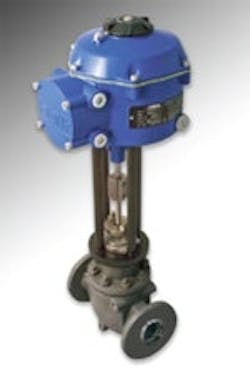Not So Fast on Single-Loop Control
I read your article, “20 Years of Control: Advanced Control Strategies Move into the Field,” Oct. ’08, p. 60, and then watched your Controlglobal videocast on the subject—the main topic being your prediction that single-loop control will (or should) go the way of the dinosaur.
Based on my 30 years of automation and APC experience, I see the subject of single-loop (one input, one output) versus multi-loop (several inputs, one or more outputs) control very differently.
My main concern as an APC implementer is loop integrity. More specifically, does an operator have confidence that the signal the control system sends to the control valve will maintain stable operation, and will not cause an upset? Consider the mainstay of basic process control, the flow control loop. Operators place the greatest degree of confidence in this loop because the likelihood that it will take action in AUTO mode that will cause an upset is almost zero. The only likely conditions that will lead to an upset are a measurement failure (xmitter failure, impulse line break, etc.) or a wind-up condition (valve fully open or fully closed).
Recently I was in a plant where most of the flowmeters were cheap vortex meters. Many of the flow controllers were in manual. Why? The flow measurements were unreliable, so the unfortunate operators had to run the plant with most of the control system in manual mode. They had lost confidence in the basic control loops.
My point is that, when extra measured variables are introduced into the basic control loop, the likelihood of measurement failure, and, hence, loop failure, increases substantially. This is why it’s never a good idea to use a flow measurement that’s been compensated for changes in flowing pressure and temperature as the raw PV for a flow control loop. If either the temperature or pressure measurement fails (or just drifts), the integrity of the flow control loop is compromised, and the operator will then have less confidence in it and is more likely to run it in manual.
Most advanced control applications use many more process measurement inputs than the above flow compensation example. Furthermore, the algorithms and computations that determine the move sent to the ultimate secondary (in your vision of the future, the control valve; in my vision of the future, the controller setpoint) are much more complex than simple PID.
It is my contention that the ultimate basic control loop in any control application should always be a single-loop controller. Any APC should always adjust the setpoint of a single-loop controller. In addition, the most successful APCs also include special logic and programming for input validation and checks for alarm conditions, proper controller modes, wind-up condition, etc., running at each control execution to ensure loop integrity. This ensures that the application does not make an output move that jeopardizes stable operation. We call this special checking “interface logic,” and we try to build it into all our APCs.
For these and several other reasons, I will always stress to our clients the importance of designing the control hierarchy with single-loop controllers (usually flow controllers) as ultimate secondaries in all advanced control applications.
Dr. James R. (Jim) Ford, PE
Director, Strategic Initiatives
Maverick Technologies


